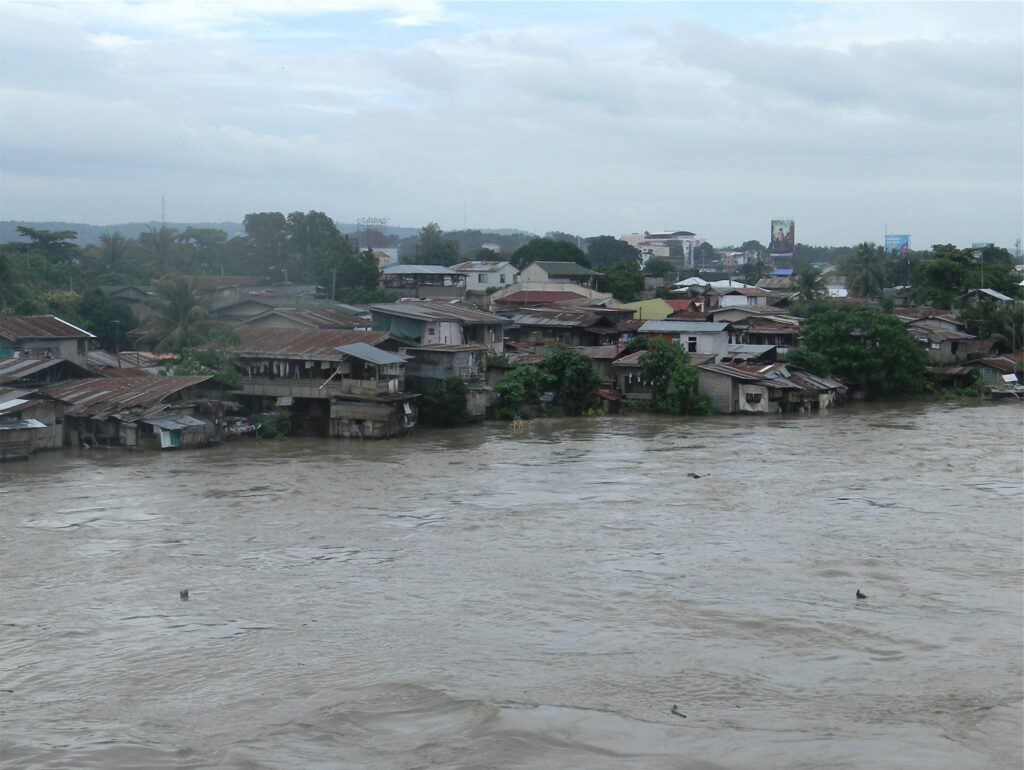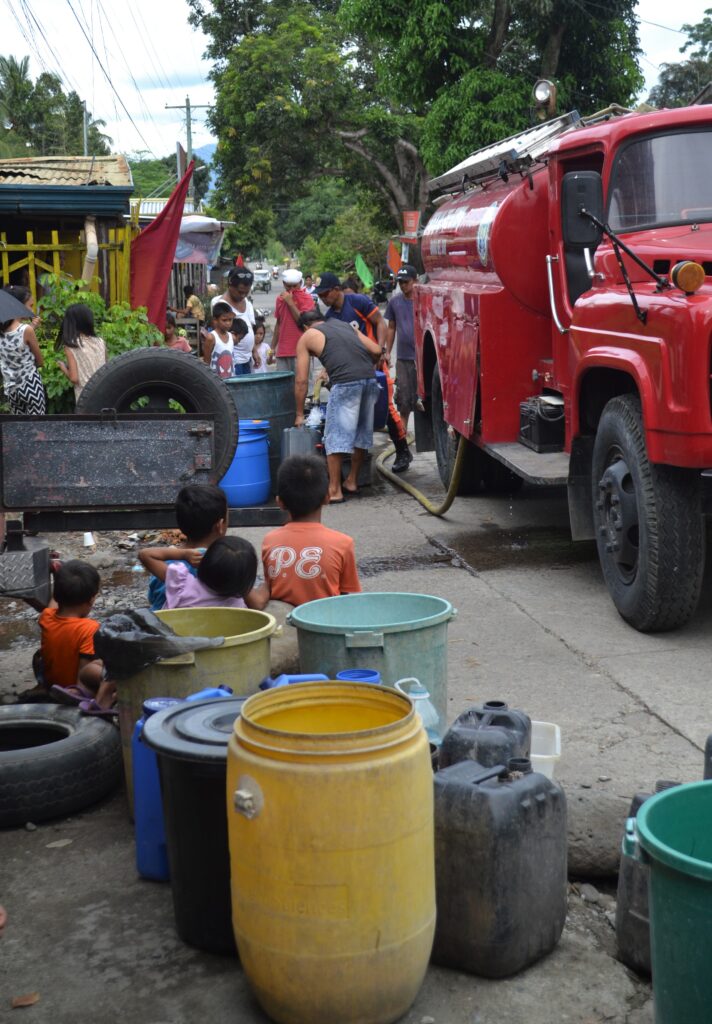Text and Photos by Henrylito D. Tacio

“Climate change is a global problem. The planet is warming because of the growing level of greenhouse gas emissions from human activity. If this trend continues, truly catastrophic consequences are likely to ensue from rising sea levels to reduced water availability, to more heat waves and fires.” – Malcolm Turnbull
***
“Climate change,” said Dutch businessman Paul Polman, “is sometimes misunderstood as being about changes in the weather. In reality, it is about changes in our very way of life.”
When it comes to climate change, there is no longer turning back. During the 11th International Coral Reef Symposium in Fort Lauderdale, Florida some years back, Dr. Simon Donner of the University of British Columbia embarked on a metaphor for climate change.
“The climate is like this big ship,” Dr. Donner told the participants. “We are all on this big ship and the problem is once you hit the brakes it takes a long time for the ship to actually slow down and stop.
“In our case, the ship is the Titanic and we are going to hit the iceberg,” he continued. “It is going to be almost impossible for us not to hit the iceberg at this point. What we need to do is everything we can to put the brakes on, to slow the ship down and move the iceberg a little bit. The time for emission reductions isn’t as much now as it was 20 years ago.”
Our planet has been warming since prehistoric times, but man’s tampering with the environment has made the temperature change faster. “Changes to the earth’s temperature are global and – for all practical purposes – irreversible not only in our lifetime but in our children’s and grandchildren’s as well,” said Dr. Christopher Flavin, author of Slowing Global Warming: A Worldwide Strategy.
Sea level rise and typhoons – these are the two consequences that are being felt now in Davao City. These two events used to be unheard of in Davao region but it could not be denied that both are now being experienced every now and then.
“My calculation is that (the sea level) has risen by one foot over a period of 20 years,” said Atty. Jesus. G. Dureza, former press secretary who owns a beach resort in Punta Dumalag. “Hence, rain waters and floods no longer easily flow or empty out into the sea.”
“On average, sea levels around the world rise 3.1 centimeters every ten years,” the Canada-based International Development Research Center pointed out. In comparison, water levels in the Philippines “are projected to rise between 7.6 and 10.2 centimeters each decade.”
In the near future, about 170,000 hectares of coastlands in 171 municipalities are expected to go underwater, particularly those low-rise island communities facing the Pacific Ocean. The cities of Davao, Mati, Panabo and Tagum and municipalities of Cateel, Malita, Santa Cruz and others are most vulnerable.
Perhaps, one of the super typhoons that hit Davao region in the 1970s was named Titang (international name: Kate). “Just before making landfall roughly 45 kilometers south of Davao City, Kate attained its peak winds of 240 kilometers per hour,” Wikipedia reported.
Then, there was typhoon Pablo (Bopha). “(It) was the strongest tropical cyclone on record to ever affect the southern Philippine island of Mindanao, making landfall as a Category 5 super typhoon with winds of 280 kilometers per hour.”
Former American vice-president has said, “By the time we see that climate change is really bad, your ability to fix it is extremely limited… The carbon gets up there, but the heating effect is delayed. And then the effect of that heat on the species and ecosystem is delayed. That means that even when you turn virtuous, things are actually going to get worse for quite a while.”
But better late than never, so goes a popular saying. “There have been many government initiatives over the years in response to climate change, but there’s still a lot to do in terms of integrating these plans and programs,” said Rex Victor O. Cruz, Professor Emeritus at the University of the Philippines Los Baños.
Although 1.5 °C is a global target, the temperature increase and associated impacts will vary locally, according to the 2019 Study on the Implications of Intergovernmental Panel on Climate Change’s (IPCC) Special Report on Global Warming of 1.5°C by the Department of Environment and Natural Resources (DENR).
There are significant risks associated with 1.5 °C warming, including impact on the poor and the most vulnerable, but risks associated with warming are substantially lower at 1.5 °C than 2 °C warming. Limiting warming to 1.5˚C, according to the IPCC, will however require prompt and immediate adaptation and mitigation actions.
In his presentation on “Unprecedented Climate Change: Unprecedented Response,” at the 2023 Annual Scientific Conference (ASC) Cruz cited that the government, especially at the level of local government units (LGUs) already made plans and have existing programs, but these are not fully integrated.
During the conference which was organized by the National Research Council of the Philippines of the Department of Science and Technology (DOST), Cruz highlighted that the risks and vulnerabilities to climate change across a ridge to reef landscape are interconnected and hence requires integrated adaptation and mitigation measures within the ridge to reef/watershed ecosystem management (R2R/WEM) framework.
The R2R/WEM framework to promote resilience of human and natural systems entails an integrated land use and development planning process where climate adaptation, mitigation and disaster risk reduction (DRR) are framed in consideration of its interactions with ecosystem protection, soil, water and biodiversity conservation, socioeconomic development, and other sectoral goals within a landscape.
The R2R/WEM-based planning process will also require the engagement of concerned non-government agencies and local government units along with other stakeholders in formulating an integrated plan for the pursuit and achievement of climate change adaptation, mitigation, DRR, and other sectoral goals.
In his presentation, Cruz emphasized the need for an S&T-based adaptation and mitigation response where policies, plans, and programs hinge on change mindsets, building up skills, policy reforms and practices, and multi-agency collaboration
Likewise, he suggested that there should be sustained efforts in building knowledge and understanding on the interactions of various ecosystems; impacts of climate change and land use on ecosystems; responses of human and natural systems to adaptation and mitigation; and assessment of risk associated with multiple hazards.
In like manner, Cruz underscored the crucial need for continuous monitoring of changes in watersheds and ecosystems in response to climate change, land use and other human activities to build empirical datasets, knowledge and tools for science-based land use and development planning.
Studies have shown the global warming of 1.00C has been reached in 2017. At the current warming rate of 0.2 per decade, global warming of 1.50C could be reached and even surpassed between 2030 and 2052 unless proactive and drastic measures are implemented soon.
“Beyond 1.50C rise in average global temperature,” Cruz warned, “we are looking at marked increase in the magnitude of impacts associated with extreme rainfall, floods, droughts, heatwaves, sea level rise, and intense tropical cyclones that will eventually put greater pressure to our lives, especially those living in highly vulnerable communities.” – ###

